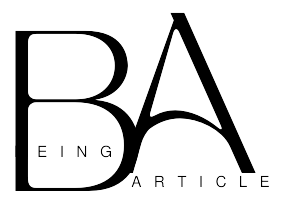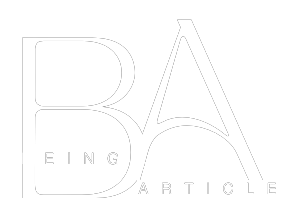How to Say Hello to a Group of People in English?
When sending a group email or letter, using the right greeting is important. Using the wrong one can cause people to respond negatively.
When it comes to saying hello, there are many options available. Read on to learn more about these different ways to say hello and get more creative with your greetings.
“Hello, Everyone”
Greeting people is a key part of speaking English fluently. When you greet someone, you want to say it in a natural and appropriate way. Whether meeting people for the first time or trying to show respect professionally, there are many ways to say hello.
“Hello” is one of the most common ways to say hello in English, and it’s easy to remember and use. However, you may have noticed a few variations of the “hello” greeting, each with its own meaning and style.
There are many ways to say “hello” in English, and knowing several variations can help you sound more natural. Choosing the best way to say “hello” can be challenging, but it’s important to remember that you should always greet people with respect.
For example, when you meet someone new, offering your hand for a handshake is always courteous. Also, if you’re meeting a group, it’s a good idea to say “hello, everyone” rather than just “hello,” so that no one feels left out.
Another common way to say hello is to simply ask a question. This can be an interesting way to get someone’s attention and a friendly way to start a conversation. Some of these questions include: how’s everything? (How’s the weather?) and what’s new? (What have you been up to lately?)
How’s everything is a more casual version of the formal “how’s it going?” You can also use this when asking if someone has seen you recently. It works especially well for meeting new people or when you’re unsure who you’re talking to.
Alternatively, you can say “long time no see” when meeting someone for the first time or when it’s been a long time since you’ve seen them. This is less formal than a “hello” but still works when meeting new people or talking to people you know well.
Besides the more casual options on this list, there are a few traditional and formal versions of “hello.” These can be a great way to make a positive impression. For example, if you’re sending an email to a group of co-workers, you might start your message with “Hello, everyone,” or you can choose “hello” instead and briefly explain what the email is about. If you’re addressing people for a business meeting, though, you’ll probably want to choose a more formal alternative.
“Hello, Guys”
It can be tough to say hello to a group of people, especially if you don’t know their names. However, some greetings you can use in English make it easier to connect with your new colleagues.
It’s important to remember that when you say hello, you’re letting the person know who you are and what you are doing. So, choosing the right words and phrases is crucial to clear your message.
You should also be mindful of the gender of the people you’re greeting. For example, if you’re addressing a mixed group, avoid using terms traditionally used only to address men or women.
This term, which is usually used to refer to a group of men, can be awkward for women or those who identify as nonbinary, according to language expert Deborah Cameron. Those uncomfortable being addressed by gender-specific terms should consider other options, such as “everyone,” which can refer to any type of group.
Alternatively, you can use the more informal “hey, guys.” This isn’t appropriate for a business meeting or a professional email, but it can be a good way to connect with someone you don’t know well.
Some people use this phrase to ask how someone is doing. However, it’s a bit more casual than the formal “hello, everyone,” so you should only use it with close friends and people you know well.
If you’re looking for a better way to greet a group of people, you can try saying, “hello, team.” This is inclusive and sounds less formal than the more traditional “guys” or “you guys,” says Melbourne-raised Tom McQuillen, who works in technology.
It’s not uncommon to hear this word in Australian workplaces, and it can be a problem for many women and those who don’t identify as male. It can also create a sense of inequity.
While the term has a long history, plenty of people believe it’s unnecessarily sexist. As a result, it’s been banned in several cities worldwide for being sexist and exclusionary.
“Hello, Girls”
“Hello, girls” is a common greeting that you can say to a group of women. It’s not a direct equivalent to “hello, guys,” but it’s still a good way to welcome everyone at once and give them a warm, friendly smile.
When saying hello to a group of girls, it’s important to remember that you want to be polite but not too formal. Using the word “you” or any other gendered terms can be awkward, but it’s also not a big deal as long as you keep the conversation positive and casual tone.
If you’re unsure how to say “hello” to a group, it’s always best to say it to the entire group at once rather than trying to pick out a few more vocal members. This will make the greeting less awkward and allow you to open the floor to banter with the group.
This greeting has been around for centuries and is a nice way to introduce yourself to a group of people. It’s also a great way to get the attention of someone you are interested in and can be used as a good starting point for a conversation.
“Hello, Girls” was first used to describe female telephone switchboard operators in the United States. These women were recruited in 1917 by General Pershing to fill an emergency need for bilingual phone operators, as he believed that men were too busy fighting to be able to do the arduous work of operating telephone switchboards.
Eventually, several of them went abroad to Europe in March 1918 and began working with the American Expeditionary Forces at several locations throughout France and England. These women, nicknamed “Hello Girls,” were among the first to serve in the Army. Their contributions during World War I are credited with the success of the Army’s communications efforts.
They were able to connect calls in the field, often under combat conditions, and their work was recognized by General Pershing, who praised their ability as a “human connection” for soldiers who had little else to rely on during the war. After the Armistice, many of these ladies continued their service with a group in Paris, where they helped translate peace talks between Germany and the Allies.
“Hello, Everyone”
If you want to say hello to a group of people, there are several different ways that you can do so. Each of these ways will vary in tone and phrasing, so make sure to choose one appropriate for your situation.
Choosing the right greeting for your situation will help ensure that your interactions are effective and pleasant. The best way to determine which greeting is the best for you is to practice it in different situations and get used to it regularly.
Another good rule of thumb is to choose a greeting that shows respect for the person you’re addressing. For example, it’s usually better to use more formal greetings if you’re addressing someone in the workplace or an academic setting.
You should also try to include context in your greetings so that the people you’re addressing will remember who you are. For instance, if you’re emailing a hiring manager or professor, it may be a good idea to mention what you discussed in the conversation that led to your contact with them.
For a more casual greeting, you can ask someone what’s up. This works well for people you’ve met for the first time and those you already know. It’s a great way to connect with them and let them know that you are interested in them and what’s going on in their lives.
If you’re addressing a large group in an email, it can be difficult to find the correct greeting. Many people use the same generic phrase, “hello everyone,” when addressing groups, which can sound unprofessional and unfriendly.
To avoid this, there are a few different alternatives that you can consider for your emails or letters. Here are a few that you can try:
What’s Up?
This is a common greeting when you meet someone for the first time or introduce yourself to them. It’s a polite way of saying that you are happy to meet them and would like to know what they have been up to.
FAQ’s
What is the appropriate way to say hello to a group?
The most common way to say hello to a group is to greet them collectively by saying something like “Hello everyone” or “Good morning/afternoon/evening, everyone”. This acknowledges the group as a whole and shows that you are addressing everyone equally.
Should I use a formal or informal greeting when saying hello to a group?
This will depend on the context and the relationship you have with the group. If the group is a professional setting or if you are meeting them for the first time, it’s usually best to use a more formal greeting, such as “Good morning, ladies and gentlemen”. If the group is more informal or if you know them well, you may choose to use a more casual greeting, such as “Hey guys!”.
What if I don’t know everyone’s names in the group?
If you don’t know everyone’s names in the group, it’s still appropriate to greet them as a collective. You can say something like “Hello everyone, it’s nice to meet you” or “Good morning, team. How is everyone doing today?”.
Should I wait for the group to acknowledge me before saying hello?
It’s usually a good idea to make eye contact and wait for some form of acknowledgement from the group before saying hello. This can be a nod, a smile, or a verbal response. Once you have received some form of acknowledgement, you can greet the group collectively.
Is it necessary to greet each individual in the group?
It’s not necessary to greet each individual in the group, especially if there are a large number of people. However, if you have a closer relationship with some members of the group, you may choose to acknowledge them individually in addition to the collective greeting.
How can I make my greeting more personal?
If you want to make your greeting more personal, you can try to address the group by name or include a specific reference to their shared interests or purpose. For example, you might say “Good morning, marketing team. I hope you’re all ready to brainstorm some great ideas today!” or “Hello, book club members. It’s great to see you all again. What’s everyone reading right now?”.



















